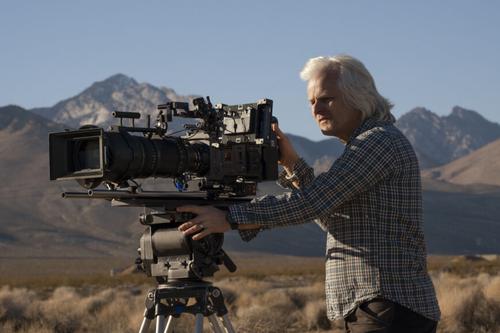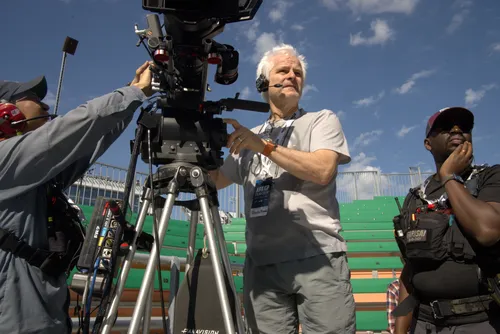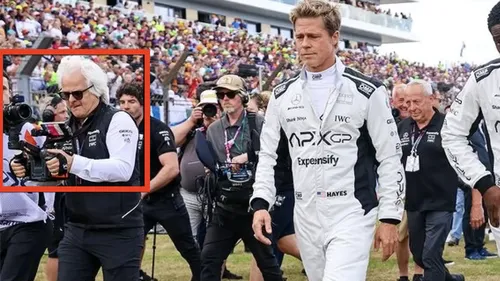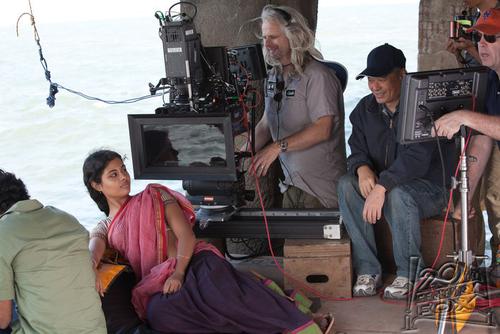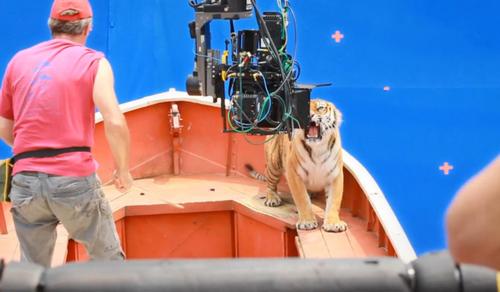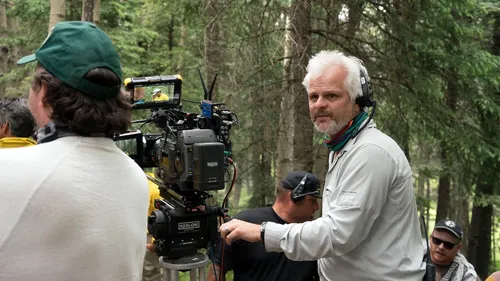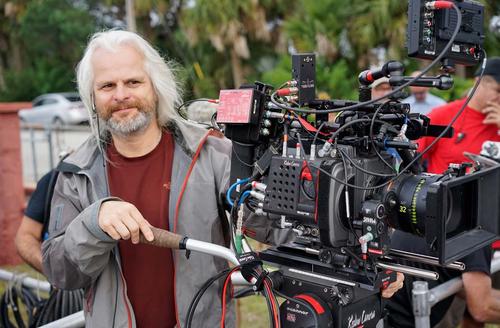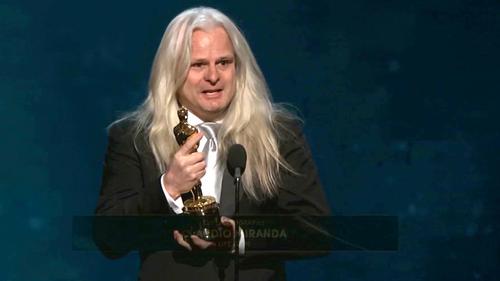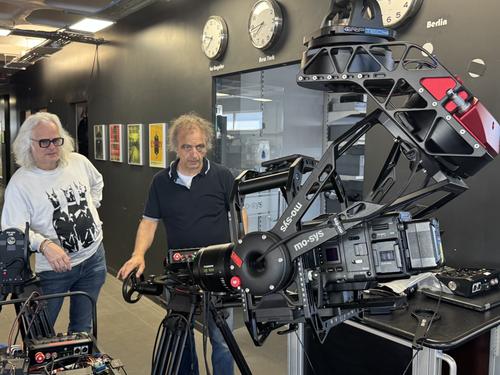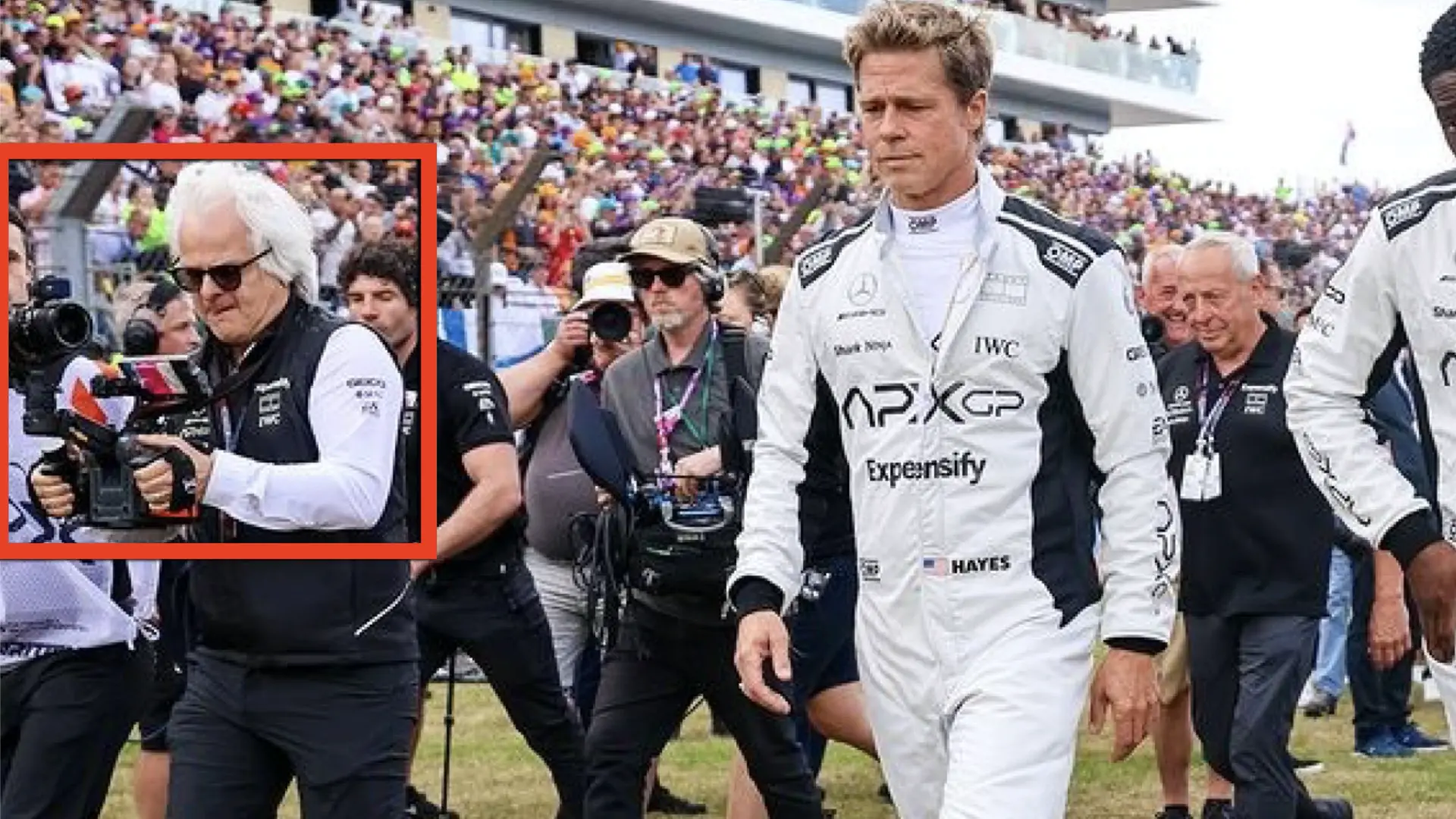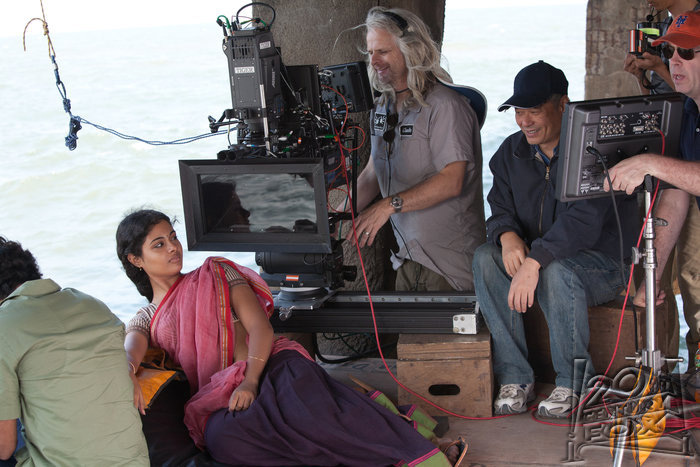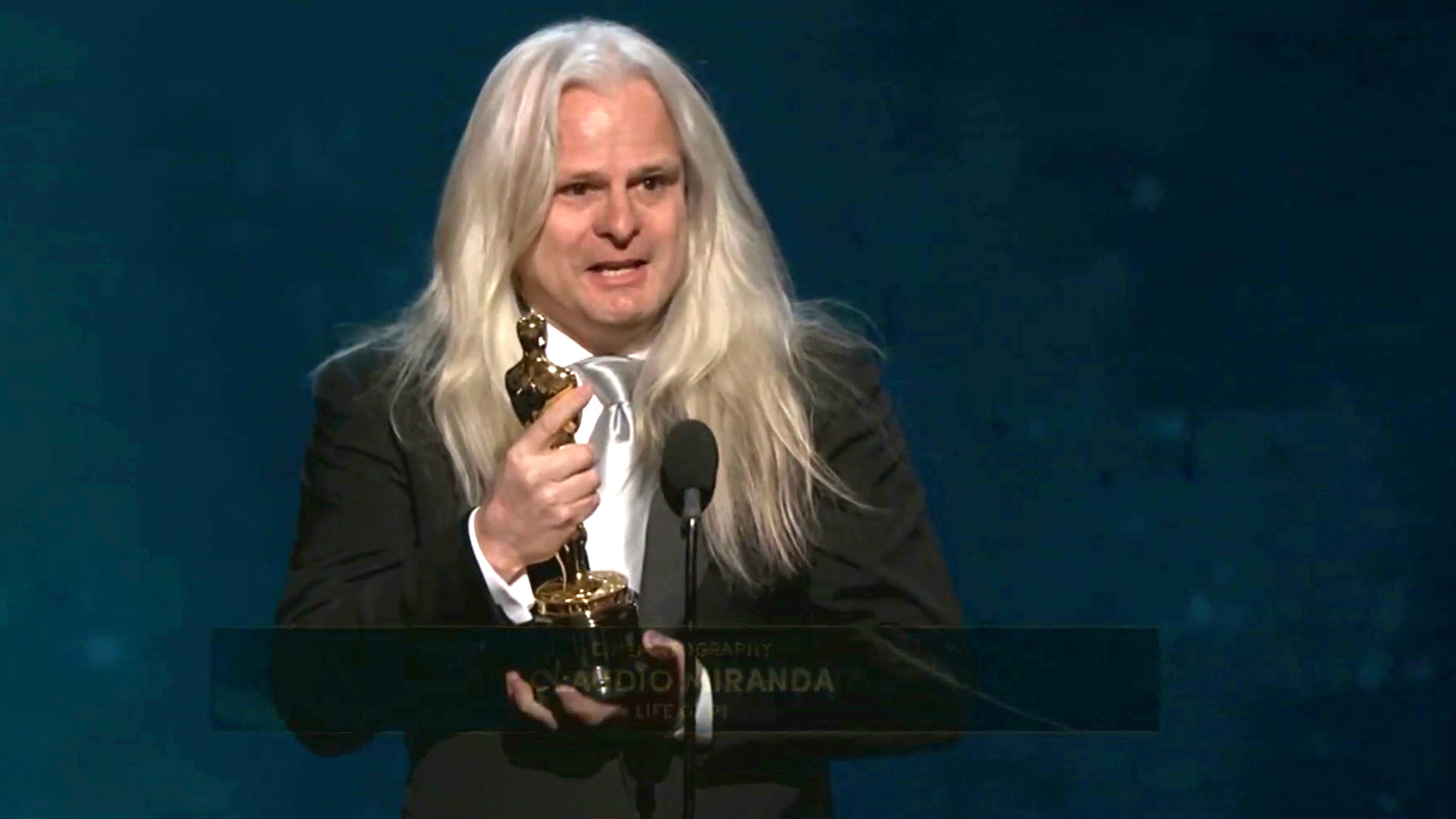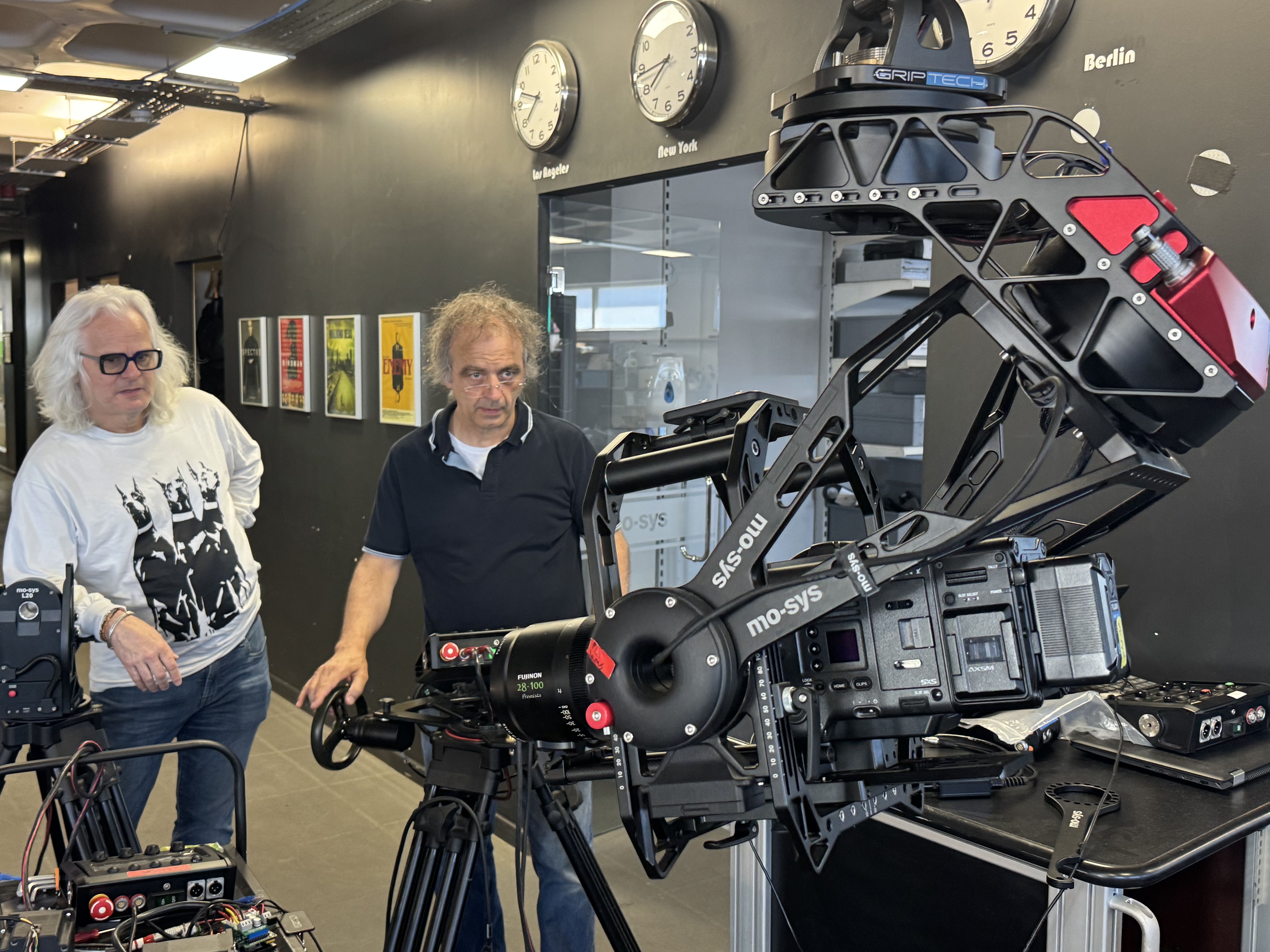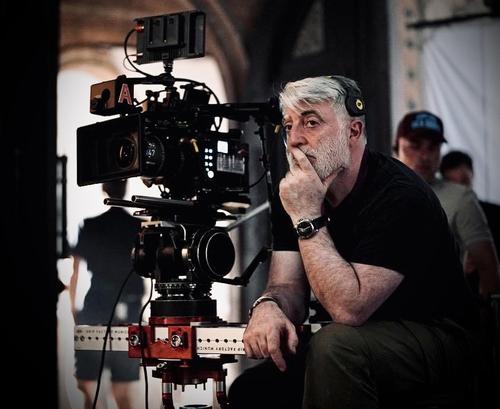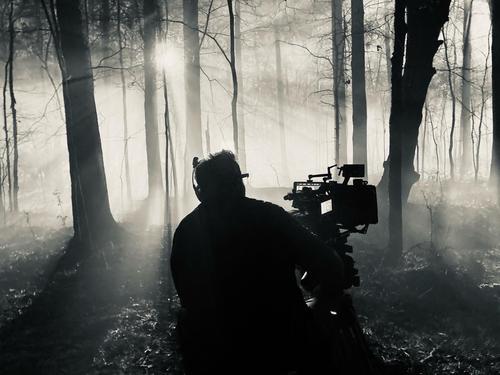Spotlight on Claudio Miranda - 'My Mo-Sys'
“My Mo-Sys” - Claudio Miranda’s 15-Year Relationship with Mo-Sys Remote Heads
It’s a cloudy, muggy morning at the height of a London heatwave as Claudio Miranda, Academy Award-winning Cinematographer, stops by the London office to check out the latest Mo-Sys remote head technology.
“Happy Fifteenth Anniversary!” Hot on the heels of the ‘F1: The Movie’, he sweeps into the Greenwich building, his long, trademark, platinum blonde locks trailing after him as he enters with an enthusiasm that disregards the hour, the climate or even the lack of caffeine. Claudio has a long history with Mo-Sys remote heads, using them on every one of his shoots, and he is eager to see the latest innovations.
“I’m looking forward to trying the L20 and the G30. I’ve been looking at the G30 for a while. With some cranes, because of where the cables contract, there’s always a little hiccup, and they give you a little nudge, so you do need a bit of stabilisation to kick out any little bumps that a non-stabilised head might pick up.”
Very Stable and Very Reliable
As he puts the G30 through its paces with Mark Seaton, Mo-Sys’s Senior System Engineer, we take a moment to talk about his fifteen-year relationship with the company.
So, when did this love affair with Mo-Sys remote heads kick off? Well, it all started back on his first collaboration with Brad Pitt, one that would net Claudio his first Oscar, ‘The Curious Case of Benjamin Button’, directed by David Fincher.
“I was working on ‘Button’, and we wanted to have a small head that we could maintain ourselves, without having to have someone with it the whole time. We didn’t want something really big, with a bunch of extra arms on it. We wanted something very stable and very reliable.”
As it turns out, for Claudio, agility and being able to react to events on set are essential considerations when choosing which remote heads to use. He values his Mo-Sys for its strength, reliability, precision and ease of use.
“We just wanted an easy-to-use head that we could have on set, that my own guys could tech without a whole new bunch of complications. When I was looking at different heads, ‘The Mo-Sys’ was the easiest one to use.”
‘The Mo-Sys’, ‘My Mo-Sys’, so ubiquitous are Mo-Sys remote heads on a Claudio Miranda shoot, that he and his team don’t even need to refer to the equipment by product name.
“I had rented it a bunch of times through other services, and having looked at all the other heads out there, I chose ‘the one’ and fifteen years later it’s still running.”
Camera First
On ‘Button’, Claudio had to light and shoot whilst being mindful of all the VFX that would be required to have Pitt’s character ageing in reverse, but whether it’s capturing the nuances of a performance to be augmented in post, or grand-scale spectacle, Claudio’s career has been synonymous with ground-breaking digital effects. So how does he approach shooting for post-heavy productions?
“I treat everything as if I’m shooting for real, so I don’t really bend too much for VFX, because we want it to feel as if we were shooting for real, like if I’m hand-held, I’ll shoot hand-held. I don’t go into virtual mode too much.”Claudio is not against VFX – far from it. A quick scan of his resumé will show that he is well accustomed to delivering stunning visuals that have been heavily augmented with digital assets, from Tron: Legacy to Oblivion and Life of Pi (for which he also won the Academy Award for Best Cinematography).
“There’s real, there’s volume, then there’s greenscreen, that’s the order,” Claudio laughs, as he gesticulates, indicating the hierarchy of the shooting methods with a clear preference for traditional live-action. “I try to get it real as much as possible. I think there’s a kinetic-ness that people really do feel, when it hasn’t been watered down by any sort of artificial environment.”
Kinetic Visuals
Things certainly don’t get much more kinetic than Top Gun: Maverick, which earned him his third BAFTA win, but Claudio has once again been pushing boundaries to capture the intensity of Formula 1 racing. So how did Claudio approach shooting the high-octane racing scenes?
“Sometimes, well, with all jobs, you potentially need different things. For ‘Formula 1’, they needed a different kind of head – a little tiny one. We even made a special head for F1 with Panavision, and all it did was pan.”
Of course, custom solutions often come with added complexity, so Miranda also needed his trusty go-to, which he could pull out of the proverbial bag to get the amount of coverage necessary to put the audience at the heart of the action.
“For me, sometimes you just need a quick shot and a quick set-up, so speed and ease of use are vital keys on movies. We were able to do some quick pans with the Mo-Sys head on the track, when I wasn’t physically able to put an operator where I needed [the camera] to be.”
The Need for Speed
The lights have turned amber, and Claudio’s engine is revving, ready to speed off up the track, out the door and on the way to his next appointment.
What has become clear from talking to Claudio is that what he prizes most is the ability to react quickly, using equipment he can keep on hand, with fast setup times and easy-to-use controls.
“I think I’ve probably used every single head out there,” laughs Claudio, “at least every single one worth investigating... When I use those other heads there are always a lot of techs involved. With The Mo-Sys it’s just my guys who tech it and it sets up in a couple of minutes – that’s why I like My Mo-Sys.”
Green light, and he’s off! Happy fifteenth anniversary, Claudio.
